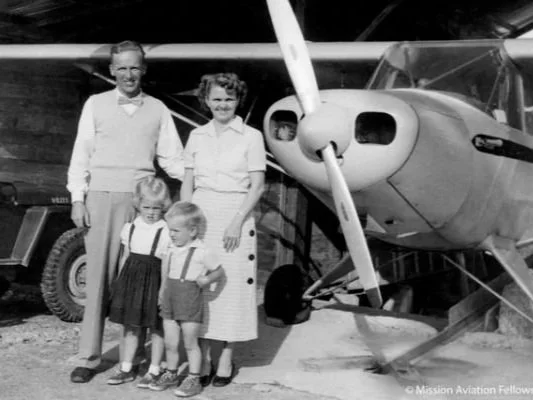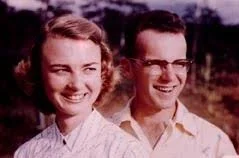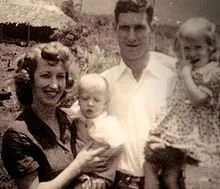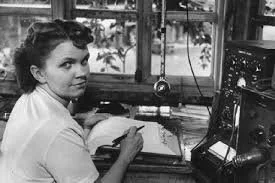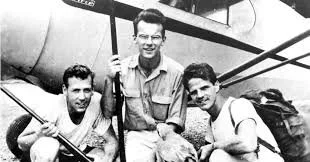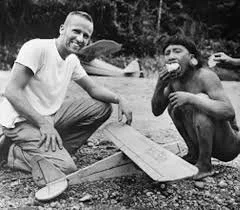The Story Behind the Ballet
In the early 1950s, a group of young American missionaries felt called to bring the gospel to one of the most isolated peoples on Earth: the Waodani of the Ecuadorian Amazon. Fierce and fiercely independent, the Waodani were largely untouched by outsiders, and contact with them was dangerous.
Jim Elliot
Elisabeth Elliot
Among the team were Jim Elliot and Elisabeth Elliot. They met at Wheaton College in Illinois, quickly forming a deep spiritual and intellectual connection. Although they felt a strong attraction to one another, they chose not to marry immediately, waiting several years to finish their education, grow spiritually, and discern God’s calling before committing to marriage. Their deliberate patience reflected their shared devotion to Christ and their understanding that God’s timing was more important than their own desires. Eventually, they married in 1953, bringing together a profound friendship, shared vision for missions, and deep personal love. Jim was thoughtful, determined, and deeply spiritual, and Elisabeth matched his courage, vision, and faithfulness.
Nate & Marjorie Saint
Also part of the mission was Nate Saint, a skilled pilot with Missionary Aviation Fellowship. Nate and his wife, Marjorie, had built a life of faith and service, raising four children together. Nate’s daring flights over the dense Amazon allowed the missionaries to deliver gifts and establish contact with the Waodani in innovative ways, including the famous “airplane bucket” drops of gifts.
Pete & Olive Fleming
Peter Fleming, newly married to Marjorie (Olive) Fleming, brought gentle scholarship and teaching to the team. Their marriage was just beginning when Pete joined the mission, showing the couple’s shared courage and commitment.
Roger & Barbara Youderian
Roger Youderian had once worked the land as a farmer in Montana, but God planted in him a deeper calling—to take the gospel where it had not yet been heard. He and his wife Barbara moved to Ecuador, where they poured themselves into life at the Shandia mission station. Roger’s quiet steadiness and patient spirit made him a natural bridge-builder, and Barbara’s strength and adaptability kept their family and ministry thriving in the challenges of jungle life.
Ed & Marilou McCully
Edward McCully seemed destined for success—he was a gifted athlete, a talented speaker, and had a bright future in law. But the voice of God redirected his steps, leading him and his wife Marilou to Ecuador. There, they exchanged the promise of worldly comfort and safety, raising their children while laboring to bring the hope of Christ to unreached people. Ed’s energy and enthusiasm complemented Marilou’s warmth and joy, making them a team that drew others in with love and hospitality.
Rachel Saint
Rachel Saint, Nate’s sister, was already deeply involved in Ecuadorian missions. A skilled linguist and lifelong servant of God, Rachel would later play a crucial role in bridging cultural gaps with the Waodani, particularly through her relationship with Dayuma, a young Waodani woman who had fled her tribe years earlier.
Roger, Pete, and Jim
Jim & Waodani Tribe Member
In January 1956, the missionaries attempted a face-to-face meeting with a Waodani group on the Curaray River. The first encounter appeared peaceful and even encouraging, with some of the tribe showing curiosity rather than hostility. But tragically, during a subsequent visit, five men—Jim Elliot, Nate Saint, Pete Fleming, Ed McCully, and Roger Youderian—were speared and killed.
Elisabeth & Daughter Valerie
Elisabeth & Tribe Members
The response of the widows was extraordinary. Elisabeth Elliot, with her infant daughter Valerie, chose to return to the Waodani rather than seek revenge, living among them for two years to teach and build trust. Rachel Saint also moved among the tribe, working tirelessly to establish literacy, translate Scripture, and mentor new believers. Marjorie Saint and Olive Fleming supported mission work and kept the vision of their husbands alive from the U.S., raising families with faith and resilience.
Over time, the Waodani began to change. Several men involved in the attack, including Mincaye and others, embraced faith in Christ, reconciled with the missionaries’ families, and became key members of the emerging Christian Waodani community. The story became one of sacrifice, forgiveness, and the power of the gospel to transform hearts, celebrated worldwide through Elisabeth Elliot’s writings—Through Gates of Splendor and Shadow of the Almighty—and later dramatized in film and documentaries.
The legacy of these five men and their families is enduring: A testament to courage, faith, and the extraordinary impact of living out the gospel even at the cost of life itself.



